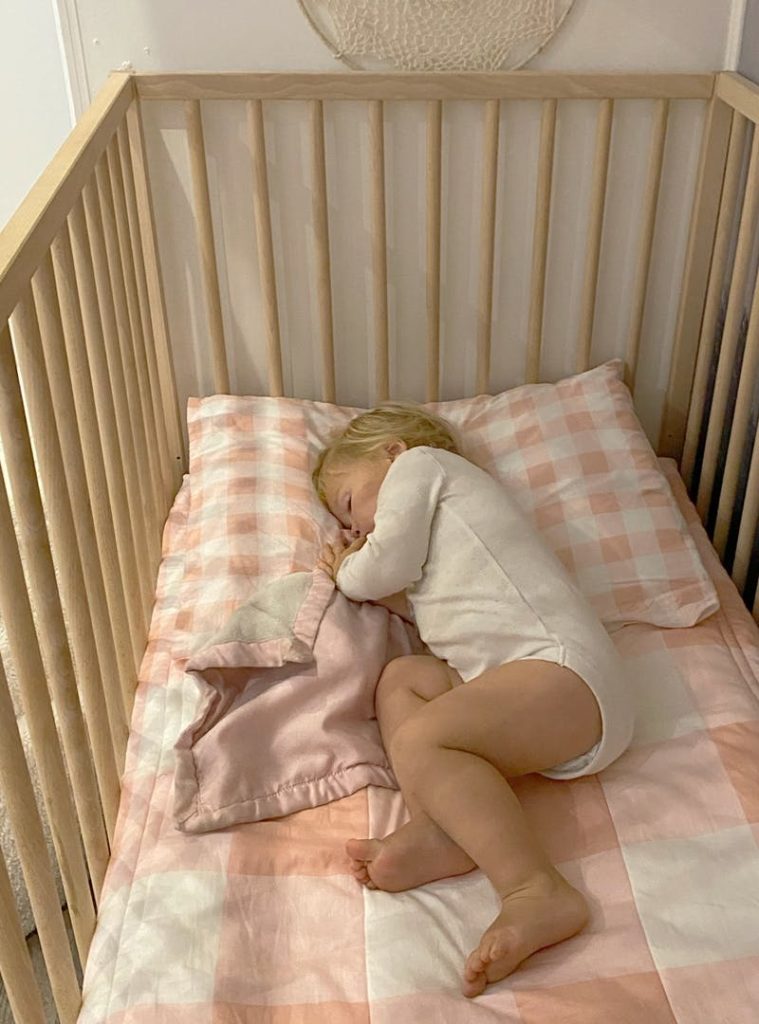How To Help Kids (And Adults) Sleep On The Road
RV vacations are full of new places, new friends, wonder, and excitement. Whether you’re a weekend warrior, a summer road tripper or a full-time RVer, sleep can be a common struggle on the road, for both children and adults alike. But with a few easy techniques, you can avoid fatigue while traveling and return from your trip with a happy, well-rested family, rather than feeling like you need a vacation from your vacation.
As a pediatric sleep consultant, I work with families on a regular basis to help them restore restful sleep to their homes. So when our family was planning to hit the road in our Heartland Oakmont for the first time, sleep was a big focus of mine. With two small children, I knew maintaining a peaceful sleep environment and healthy habits would be crucial to our happiness as travelers. Here are the tips that helped us succeed.
Make your bedroom feel like home
Just like you might nest and decorate a bedroom in a house, go out of your way to create a comfortable environment in your RV sleeping spaces. Swapping out the mattresses is an easy hack if you favor a softer or more firm bed. Bring along your favorite pillows, especially if they’re customized for your sleeping style––good side- or back-sleeper pillows can be worth the extra cost.

We switched out our RV mattress for an affordable king size memory foam mattress.
Keep cool
Nighttime temperatures between 68 to 72 degrees promote optimal sleep. The warmer you are while you sleep, the less melatonin your body produces. Melatonin is a naturally occurring sleep hormone. Naturally, as you near the second half of the night, your body’s core temperature rises and melatonin decreases. A cooler room in the early morning helps prolong the presence of melatonin in your bloodstream. Some people find they love a fan in their room, which works well, as long as it’s not oscillating or blowing too strongly.
Get black out shades
Light plays a crucial role in your child’s sleep. It plays a crucial role in adult sleep too, but we’re much more motivated to sleep than our little ones. It’s important to understand how light in your child’s sleep environment can disturb their sleep, especially on the road. When the retina detects light, it signals to the brain to stop producing melatonin. When the brain stops or slows the release of melatonin, you begin to climb out of deep sleep and into lighter sleep until you wake up. Unfortunately, if the room is too bright, this can happen before our sleep needs are fully met. Blackout shades are useful because they prevent natural light from disrupting our sleep before we’re ready.
My husband and I switched out our RV shades for blackout shades and curtains from Ikea. Additionally, we have a removable cover for the skylight in the bunkhouse to make the space pitch black for optimal rest.

This is where my daughters sleep. Blackout shades help encourage optimal sleep.

Sophia, snug as a bug in her crib.
Use a white noise machine or app
With the potential for noise in an RV resort, having white noise can be crucial for sleep. It’s not just good for drowning out unfamiliar sounds, white noise actually functions to keep the brain in deep sleep for longer. When we are in deep sleep, all of our brain’s receptors are essentially “plugged-in” and unable to receive outside stimuli. But as the brain moves into lighter stages of sleep, some of the receptors “unplug” and begin taking in sounds, which in turn stimulates the brain into greater activity.
The best antidote are white noise sounds. Unlike rainstorm or ocean sounds, white noise is random sound without patterns or loops that stimulate your brain’s attention. As the brain starts to rouse in the morning, the white noise muffles distractions, allowing you to sleep until you’re naturally ready to wake. We use the LectroFan Kinder in our RV and at home, a Bluetooth-capable white noise machine that plugs right into a standard outlet. In a pinch, however, there are lots of white noise apps you can download on your phones or tablets for free.
Keep a nighttime routine.
A simple ritual you can replicate every night is an easy way to signal to your child’s brain that it’s time to wind down. We like to prepare a bedtime snack of healthy foods, as processed sugars can trigger excess energy in little ones. I like to take something easy and dress it up a little so that it still feels like dessert. Then we read a book and have some snuggles before bed. Our routine begins about an hour before bedtime, giving our girls plenty of time to adjust. Your routine doesn’t need to be intricate, just keep it simple and consistent.

Staying active outdoors helps prepare us for a restful night's sleep. Olivia loves to explore all the new places we visit in our RV.

We like to dress up healthy bedtime snacks to make them feel like dessert without adding processed sugars.
Keep your schedule consistent
There’s a persistent myth that keeping kids up late can wear them out for a better night’s sleep, especially when people are on vacation. Unfortunately, that advice goes against biology, and while it can work temporarily, you’ll pay the price when you return home. Sleep begets sleep. When we reach a state of being overtired, our bodies combat sleepiness by producing cortisol and adrenaline––hormones that make us more alert. You might recognize them more as a “second wind” late at night. But with additional wake hormones in our systems, we’re more prone to restlessness, night terrors and waking up too early. Instead, stick to a schedule best suited for you or your child’s developmental needs.
If you must have a nightlight…
Kids can be stubborn about their preferences. If yours insists on a night light, make it one with a red bulb. White or blue light actually signals the brain to stop melatonin production, while red light encourages melatonin production, giving your little one a better chance at a full night’s sleep.
Now that you’re armed with my best tips, you’re ready to embark on all the wonderful, exciting, and restful RV trips in your near future, knowing you’ll be sleeping like a newborn.

We love visiting new places without worrying about how we’ll sleep. This is our rig parked right on the sand in Destin, Florida.
*Please make sure you refer to the American Academy of Pediatrics guidelines for safe sleep practices when creating your child’s sleep space.
This story first appeared on Thor Industries.





